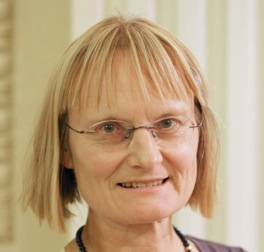The Student Art Exhibit: A Collaborative Journey
Keywords:
student art exhibits, museum education, engagement, collabortive pedagogy, authentic artmaking, Brooklyn MuseumAbstract
This study explores what happened when secondary students created an art exhibit within a flexible framework provided by the teacher. Burton (2006, 2004, 2001) identified student exhibits as opportunities for heightened and comprehensive student engagement and learning in art. Lackey (2008) acknowledged that student exhibits enhanced communication between students and adults. The findings in this article, with specifications, supported these conclusions. From visiting a model exhibit at the Brooklyn Museum, to planning, creating, and exhibiting artwork, four themes emerged: 1. teacher as collaborator, 2. students as problem solvers, 3. museum exhibits as creative catalysts, and 4. student-led exhibitions as opportunities for school-wide collaboration.References
"References
Berg, B., & Lune, J. (2012). Qualitative Research Methods for the Social
Sciences. Pearson Education, Inc.: Boston.
Bowen, G. (2009). Document analysis as a qualitative research
method. Qualitative Research Journal, 9(2), 27-40.
Bowman, R. (2007). How can students be motivated: A misplaced question? The Clearing House, 81(2), 81-86.
Burton, D. (2006). Exhibiting Student Art The Essential Guide for Teachers. New York and London: Teachers College Press.
Burton, D. (2004). Exhibiting student art. Art Education, 57(6), 41-46.
Burton, D. (2001). Social dynamics in exhibiting art: Rethinking the practices of art education. Art Education, 54(1), 41-46.
Burton, J. (2000). The configuration of meaning: Learner-centered art education revisited. Studies in Art Education, 41(4), 330-345.
Choi, W. (1998). How students transform a “stuffy building with a bunch of rules.” Art Education, 51(2), 46-51.
Cotner, T. (2001). Why study classroom talk? Art Education, 51(1), 12-17.
Cummings, K. (2010, Summer). “So what.” “Who cares?” “Whatever”: Changing adolescents’ attitudes in the art classroom. Visual Arts Research, 36(1), 55-67.
Drake, L. (2013). Exhibiting Culture: Innovative Display Techniques in the Brooklyn Museum’s Connecting Cultures Exhibition. (Unpublished master’s thesis). Columbia University, New York.
Hafen, A., Allen, J., Mikami, A., Gregory, A., Hamre, B., & Pianta, R. (2012). The pivotal role of adolescent autonomy in secondary school classrooms. Journal of Youth & Adolescence, 41, 245-255.
Hathaway, N. (2013). Smoke and mirrors: Art teacher as magician. Art Education, 66(3), 9-15.
Hicks, L. (2013). Art education: Thing or device? Studies in Art Education, 54(2), 99- 102.
Lackey, L. (2008). What is exhibition for? Considering the purposes of art display in a Saturday art school context. Art Education, 61(4), 33-39.
Maheshwari, M. (2006). ‘Teen Talks’ at the photographers’ gallery.
Engage: The International Journal of Visual Arts and Gallery Research. 20, 52-56.
McCall, K. (2006). Young people as Interpreters: Manchester art gallery’s creative consultants. Engage: The International Journal of Visual Arts and Gallery Education Research, 20, 52-56.
Pitri, E. (2013). Skills and dispositions for creative problem solving during the art making process. Art Education, 66(3), 41-45.
Roberts, T. (2005). Teaching real art making. Art Education, 58(2), 40-45.
Roberts, T. (2008). What’s going on in room 13? Art Education, 61(5), 19-24.
Saldaña, J. (201). The Coding Manual for Qualitative Researchers. 2nd ed. Sage Publications, Thousand Oaks, CA.
Stokrocki, M. (1997). Qualitative forms of research methods. In S. D. LaPierre & E. Zimmerman (Eds.), Research Methods and Methodologies for Art Education (pp. 33-56). Reston, VA: National Art Education Association.
Strauss, A. & Corbin, J. (1998). Basics of Qualitative Research: Techniques and Procedures for Developing Grounded Theory. 2nd ed. Sage Publications, Newbury Park, CA.
Walker, M. (2010). Concept-based inquiry into art making: The possibility of change through art. (Doctoral dissertation). Retrieved from ProQuest, UMI Dissertations Publishing. (3400658).
Witmer, S., & Borst, J. (1999). Making connections: Getting teens to talk about art. Art Education, 52(5), 33-38.
Zander, M. (2004). Becoming Dialogical: Creating a place for dialogue in art education. Art Education, 57(3), 48-53.
"

Downloads
Additional Files
Published
Issue
Section
License
Authors who publish with this journal agree to the following terms:- Authors retain copyright and grant the journal right of first publication with the work simultaneously licensed under a Creative Commons Attribution License that allows others to share the work with an acknowledgement of the work's authorship and initial publication in this journal.
- Authors are able to enter into separate, additional contractual arrangements for the non-exclusive distribution of the journal's published version of the work (e.g., post it to an institutional repository or publish it in a book), with an acknowledgement of its initial publication in this journal.
- Authors are permitted and encouraged to post their work online (e.g., in institutional repositories or on their website) prior to and during the submission process, as it can lead to productive exchanges, as well as earlier and greater citation of published work (See The Effect of Open Access).


